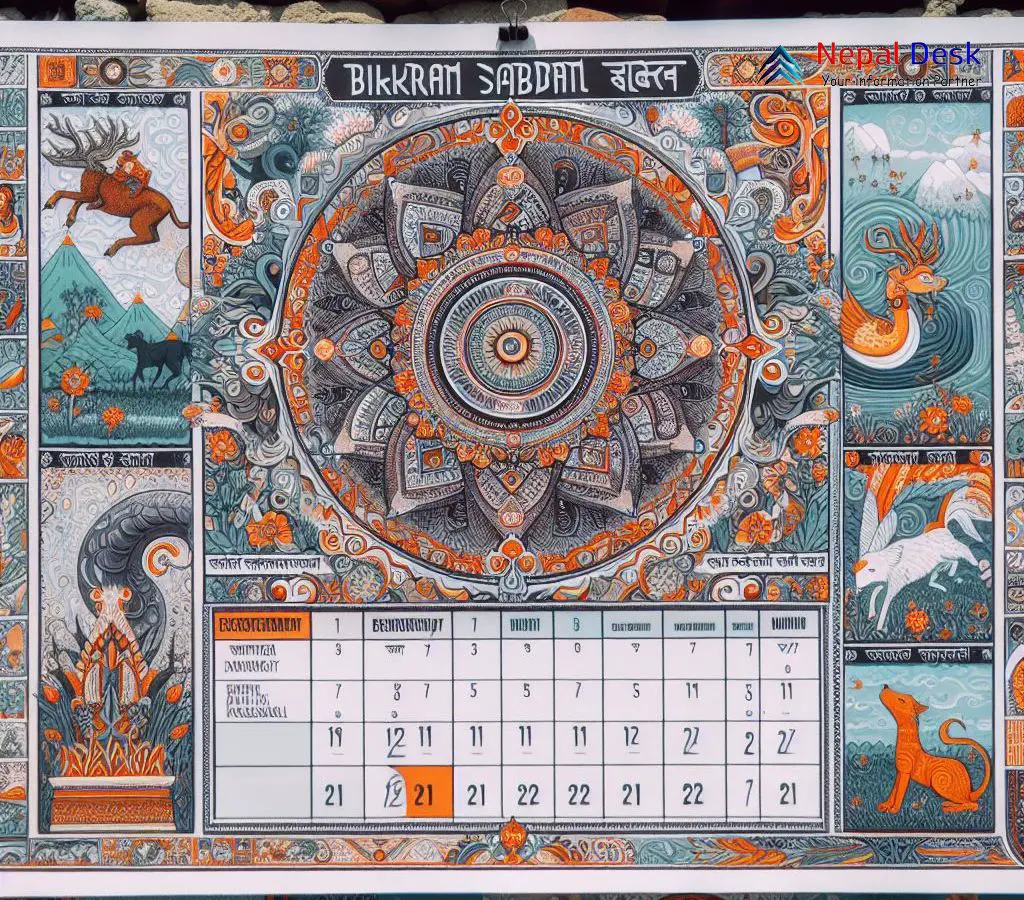Nepali Calendar Committee Approves 15 Calendars for 2081 B.S.
Published Date

Published Date
Nepali Calendar Determination Committee sanctions 15 calendars for 2081 B.S., introduces guidelines to regulate and monitor the publication process.
⏱ 5 min read
The Committee for Determining the Nepali Calendar has granted its approval to 15 almanacs for the coming 2081 B.S. year.
Surya Prasad Dhungel, the Executive Director of the NCDC, announced that a decision was reached to sanction 15 calendars (almanacs) for 2081 B.S. These sanctioned calendars are slated to hit the market on January 29, as per the committee’s schedule.
Toyanath Pant, Baburam, Narnath, Himal, Athola, Tarakeshwar, Surya, Akash Darshan, Bangalamukhi, Shubh, Baba Gorakhnath, Kirti, Siddhi, Khaptad Taranath and Gaurishankar are the 15 entities whose calendars have received approval for the ensuing year by the NCDC's member secretary. The 'National Almanac', which commenced its publication in 2079 B.S., will persist in its release.
Historically by 2076 B.S., calendar publication occurred mid-December. It was on January 4th, 2021 when the Council of Ministers sanctioned the establishment of this committee. Before this mandate, the formation and approval of calendars were managed through mere ministry directives. The current formation order appeals to citizens to utilize solely those calendars that bear the committee's endorsement.
Five elements—dates, bars, yogas, nakshatras, and karanas—make up panchangs (calendars). In modern times, common folk are catered to by converting traditional clock times into hours for inclusion in calendars. The demand for calendar amelioration is met with annual updates by the committee.
Since 2079 B.S., directives were given to structure the calendar more methodically but tangible progress had been absent previously. Over the past two-year span, an edict has been set in place necessitating approved endorsements for calendar publications—a protocol adhered to in this current year as well. Situations of unapproved calendar distributions arose without subsequent committee action. Dhungel recognized that last year’s unregulated petitions went without repercussion due to a lack of guidelines covering such instances.
Post-committee approval ensures calendar organization and replication into wall calendars of the authorized version is routine practice. For 2079 B.S., notification requiring approved publication was discharged despite non-coordination from some publishers with the committee.
The Ministry of Culture, Tourism, and Civil Aviation has established new guidelines this year for publishing calendars. These guidelines make provisions for monitoring headed by the Chief Joint Secretary of the Culture Division at said Ministry and include representatives from important agencies and involvement from the Ministry of Home Affairs.
The monitoring group conveys that sub-committees may emerge as necessary under these regulations. With these new directives in motion, any publishers or bulletin editors releasing unauthorized calendars will be subject to punitive measures once monitoring transpires. Legal actions will also target those replicating approved versions without proper permissions.
The Chair of this Committee Shri Krishna Adhikari reinforced that legitimate calendar publications can proceed only through sanction by both the Department of Information and Broadcasting and with committee approval. Given that other calendar renditions often get published with modifications derived from the department's or committee's endorsed works (almanacs), deliberations around potential copyright law enforcement have arisen.
This year's parallels last in terms of caution with an unequivocal message from the committee: all unlicensed calendar publishers anticipate legal ramifications since exemption from law remains inapplicable to anyone.
What is the Nepali Calendar System?
Nepal mostly follows the BS date system to the AD date system. BS stands for Bikram Sambhat. Now it is 2080 BS with 2.5 months remaining for 2081, while AD is 2024, and as such BS is 46 years ahead of AD. The Vikram Samvat refers to a traditional Hindu lunisolar calendar profoundly embedded in Nepali culture. Formally instituted under the 12th century Malla king's court, this historic calendar endures guiding religious timing and social traditions across Nepal. Though younger generations and educated elder people can understand the AD system, people in rural areas and those who are not literate cannot.
Key Attributes:
- Lunar Months: The Vikram year comprises 12 lunar months spanning Maha Saptami to Purnima phases moving through Shukla and Krishna fortnights timed using the moon's cycles.
- Calendar Start: Commencing memorializing mythology of King Vikramaditya's victory in 57 BCE, each new Vikram year starts around mid-April just as Spring harvests ripen across Nepal's agrarian lands.
- Month Enumeration: In succession, Chaitra to Falgun constitute the Vikram year with intercalculated leap months added periodically to reconcile solar alignments critical for climate-sensitive activities.
- Official Status: Alongside the global Gregorian system, the Government of Nepal decrees mandate using the Vikram Samvat date for state documentation upholding its civilizational heritage.
- Cultural Role: Religious festivals, marriage ceremonies, and innumerable auspicious occasions rely on Vikram lunar timings for determining planetary positions and muhurats leveraging Jyotish astrology guiding the eternal wheel of Nepali seasons and celebrations as communities honor ancestral traditions.
Therefore, more than a mere time measurement tool, Nepal's endemic Vikram calendar order binds the cosmic rhythm of sacred days across civilizational history - issuing forth through legendary kingdoms onto new democratic eras where both heritage and progress now flow synergistically as Nepalis collectively embark into an emerging future still guided by the heavens revered by ancient stargazing forefathers.
